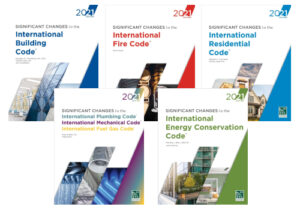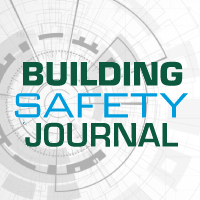
Significant changes to two-family dwelling separation in the 2021 International Residential Code
The change states that the prescribed fire-resistance-rated separation between two dwelling units in a single building is not affected by the presence of a lot line between the units
A modification to Section R302.3 (Two-Family Dwelling Separation) of the 2021 International Residential Code (IRC) states that the prescribed fire-resistance-rated separation between two dwelling units in a single building is not affected by the presence of a lot line between the units.
Unlike townhouse unit separations, two-family dwellings (duplexes) only require a 1-hour fire-resistance-rated separation between dwelling units. It has been debated whether a lot line between the dwelling units (which is common in some areas of the country and not common in others) impacts this separation requirement. The question has been whether the lot line means that the wall at the separation is considered to be an exterior wall that needs to meet the provisions of Section R302.1, resulting in two 1-hour walls at the lot line. In some jurisdictions, the answer was yes. Further, in some cases with a separating lot line, the interpretation has been that the building is no longer a two-family dwelling, but two separate detached single-family dwellings, each requiring a 1-hour wall at the lot line. In other jurisdictions, the answer was no: a duplex is a duplex no matter if the dwelling units are divided by a lot line. The reasoning behind this approach was that the fire does not know if there is a lot line there and only the 1-hour separation applies. The change to this section intends to end the debate and clarify the application of this separation. The intent of the new language is that a fire-resistance rating need never be greater than 1 hour, whether there is a lot line between dwelling units or not. For the lot line question, this brings the two-family dwelling provisions into agreement with the townhouse provisions. If the townhouse has fire sprinkler protection, a common 1-hour wall has been acceptable even if there was a lot line between townhouse units. If the exterior wall provisions in Section R302.1 were applied to townhouses, the 1-hour common wall would not be allowed.
Presumably, this change to the code allowing a 1-hour separation when there is a lot line between duplex dwelling units is meant to apply to the exception as well. The exception permits a draft stop to separate the attics of the dwelling units if other fire-resistance requirements are satisfied.
Another exception to the 1-hour separation requirement for two-family dwellings has allowed the rating to be reduced to ½ hour if a full NFPA 13 sprinkler system was installed. This exception has not been used nor would it be used because of the extra cost associated with a full NFPA 13 system typically associated with commercial structures. The cost would far outweigh any savings realized from reducing the rating from 1 hour to ½ hour. As another incentive to install a sprinkler system for areas of the country that do not adopt the IRC sprinkler provisions, a dwelling sprinkler system installed in accordance with Section P2904 or NFPA 13D now can be used to reduce the rating to ½ hour.
Read the full significant change.
 The 2021 Significant Changes guides are available for the International Building, Fire, Residential, Energy Conservation, Plumbing, Mechanical and Fuel Gas Codes. This valuable series can help any code user save time by zeroing in on the most critical changes in the 2021 International Codes. The Code Council’s technical experts provide summaries, analysis and graphics for these changes making them clear and easy to understand. Each edition provides a comprehensive analysis of significant changes since the 2018 edition, offering key insights into its contents and implications. Each change analysis features the affected code sections and identifies the change with strikethroughs and underlines to show modifications to the existing language. Each change is accompanied by a quick summary, detailed illustrations, and a discussion of its significance, which brings the technical jargon of the code to life in a real-world setting.
The 2021 Significant Changes guides are available for the International Building, Fire, Residential, Energy Conservation, Plumbing, Mechanical and Fuel Gas Codes. This valuable series can help any code user save time by zeroing in on the most critical changes in the 2021 International Codes. The Code Council’s technical experts provide summaries, analysis and graphics for these changes making them clear and easy to understand. Each edition provides a comprehensive analysis of significant changes since the 2018 edition, offering key insights into its contents and implications. Each change analysis features the affected code sections and identifies the change with strikethroughs and underlines to show modifications to the existing language. Each change is accompanied by a quick summary, detailed illustrations, and a discussion of its significance, which brings the technical jargon of the code to life in a real-world setting.
Significant Changes to the International Residential Code, 2021 Edition, is available in the ICC Store or through Digital Codes Premium.








